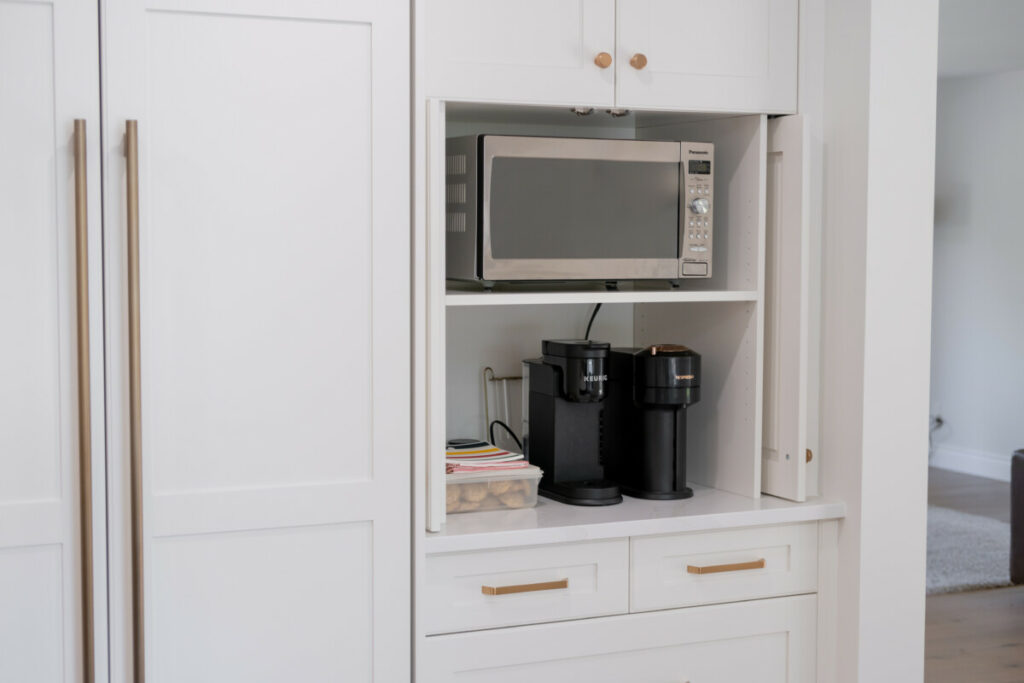Choosing the Right Appliances: Cooktops, Ranges, Ovens, and Microwaves
PART 1

Cooktops, Ranges, and Ovens
These items are some of the most important appliances to think about to make sure they will cater to your cooking style!
Step 1 will be determining what size appliances make sense for you.
If you have a particularly small kitchen, or live in an apartment or condo, you may want to reduce the size of these appliances from the very common 30” wide models, to apartment size options.
If you are a standard cook, you will likely find the standard 30” ranges, cooktops and wall ovens will work perfectly fine for you.
If you are a big cook, who loves to be in the kitchen, frequently find yourself using 4 or more burners, and find the need for an extra oven regularly, upgrading to a 36” or larger cooktop/ range plus double wall ovens will be best to make cooking and hosting a breeze!
Step 2 will be determining what style cooktop or range will work best for you. Three typical types are electric, gas and induction. Here are pros and cons of each.
Electric

Pros:
– The flat surface allows for more room to cook, and an even stable cooking space.
– Less expensive to install.
– Less heat conducted, keeping kitchens cooler.
Cons:
– Easy to burn yourself on the elements.
– Slower cooking/boiling times.
– Less even cooking.
Gas

Pros:
– Responsive temperature control.
– Can cook even if the power goes out.
– Best for searing or grilling style cooking.
– Works with a wide variety of cookware.
Cons:
– Hard to clean under burners.
– Open flame is more dangerous.
– Better ventilation is typically encouraged.
– More expensive to install.
Induction

Pros:
– The flat surface allows for more room to cook, and an even stable cooking space.
– Most responsive and precise temperature control.
– Boils water faster than any other option.
– Most energy efficient.
– Elements cool quickly and are safer to touch, reducing burn or fire risk.
– Safest option.
Cons:
– Requires induction compatible cookware.
– More expensive.
– Dragging cookware across the surface will often lead to visible scratching.
Ovens
Here are a few points to consider when selecting oven type, number and location of ovens.
Having multiple ovens (usually 2) is encouraged if you are someone who spends a lot of time in the kitchen, or regularly hosts larger parties or dinners. This will make coordinating timing much easier with better results!
If you find there are multiple cooks in your kitchen at once, and if space allows, separating your oven locations from your cooktop is often desirable, as this allows both major cooking zones to be accessed without stepping on each other’s toes, for maximum efficiency and safety! Installing wall ovens apart from your cooktop provides a high-end cooking experience.
Lastly, more types of ovens are emerging every year! Here are two types of ovens to ask your appliance expert about, and to ask your kitchen designer about including in your space.

Speed Ovens
Speed ovens or combination ovens, combine your typical oven with microwave capabilities. This option will heat your food faster and more efficiently while also offering better energy efficiency than your traditional oven.
Steam Ovens
Steam ovens are a popular appliance. Unlike traditional ovens that use dry heat to cook your food, these ovens have a water reservoir allowing hot steam to rise and cook your food in no time! The best part about these ovens is their ability to lock in nutrients that are often lost with traditional cooking.
Microwaves
For fast and convenient cooking and reheating, there are a few locations and styles of microwaves that are found in most kitchens today. Here are their pros and cons.
Standard Counter or Shelf Microwaves

Pros:
– Cost effective.
– Come in a variety of sizes.
– Can be placed in a variety of locations with easy installation.
Cons:
– Can take up valuable counter space if located on your cooking surface.
– Less of a built-in customized look, with lower end feel.
Over the Range Microwaves

Pros:
– Can combine two appliances in one (microwave and rangehood).
– Located where upper cabinets are less desirable/ functional.
– Don’t take up counter space.
Cons:
– Aren’t typically as powerful as classic rangehoods.
– Located higher than other microwave locations, making them harder to access.
– Can be quite bulky, and not as appealing as a classic rangehood.
Drawer Microwave

Pros:
– Built-in, modern and sleek.
– Easy to tuck away in a discreet location.
– Easily accessible – no risk of lifting hot food above your head.
Cons:
– More installation required.
– No turn table function.
– More expensive.
No matter what your needs are in your space, our kitchen designers can help you determine what makes sense with your style preferences and desired layout. From there, you will be informed and prepared when speaking with an appliance expert to achieve a highly customized kitchen for you and your family!


